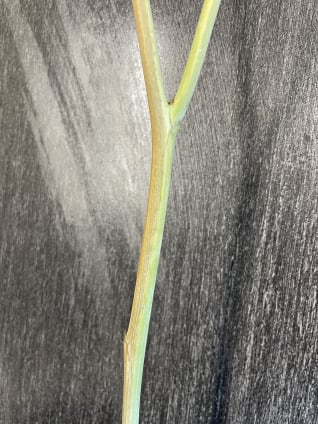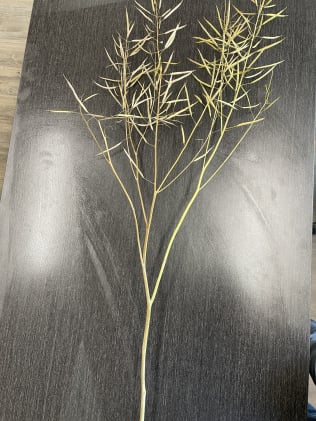
Microsclerotia

Shedding up 1 side of stem

Shredding of stem tissue

Infected plant

Microsclerotia

Shedding up 1 side of stem

Shredding of stem tissue

Infected plant
In a 2022 Manitoba disease survey, the disease was found in 38% of fields surveyed. According to the 2022 Saskatchewan Disease Update at the Saskatchewan Agronomy Research Update in Saskatoon this past winter, there was a 64% prevalence of verticillium stripe in a targeted disease survey along the Manitoba/Saskatchewan border.
Although it is becoming more common, the impact on yield is still unknown. Oil content is unaffected. It appears to be less damaging than sclerotinia stem rot and blackleg since the onset of the disease is later in the growing season2. In Europe, yield losses range from 10 to 50% [1].
There are no seed treatments or fungicides registered to control the disease. Management strategies include:
1. Rotation – 3 years between canola crops is ideal.
2. Weed management of hosts – volunteer canola and other brassica weeds.
3. Biosecurity – limit soil movement.
4. Variety selection – some varieties show differences in susceptibility. Corteva has started to rate their varieties on a scale of 1-9. There is potentially better natural verticillium resistance in longer maturing varieties due to the timing of the disease and crop life cycle, but this is not confirmed.
5. Harvest management – swathing infected plants may help prevent pod drop/shatter, as well as not allowing the disease to spread as much. Swathing may not fully allow the disease to finish its life cycle and may spread less spores throughout the field.
Free testing of the disease is available through Pest Surveillance Initiative in Manitoba, and SaskCanola in Saskatchewan. If you are interested in having samples tested, or your fields scouted for Verticillium, reach out to an agronomist at Prairie Giants.